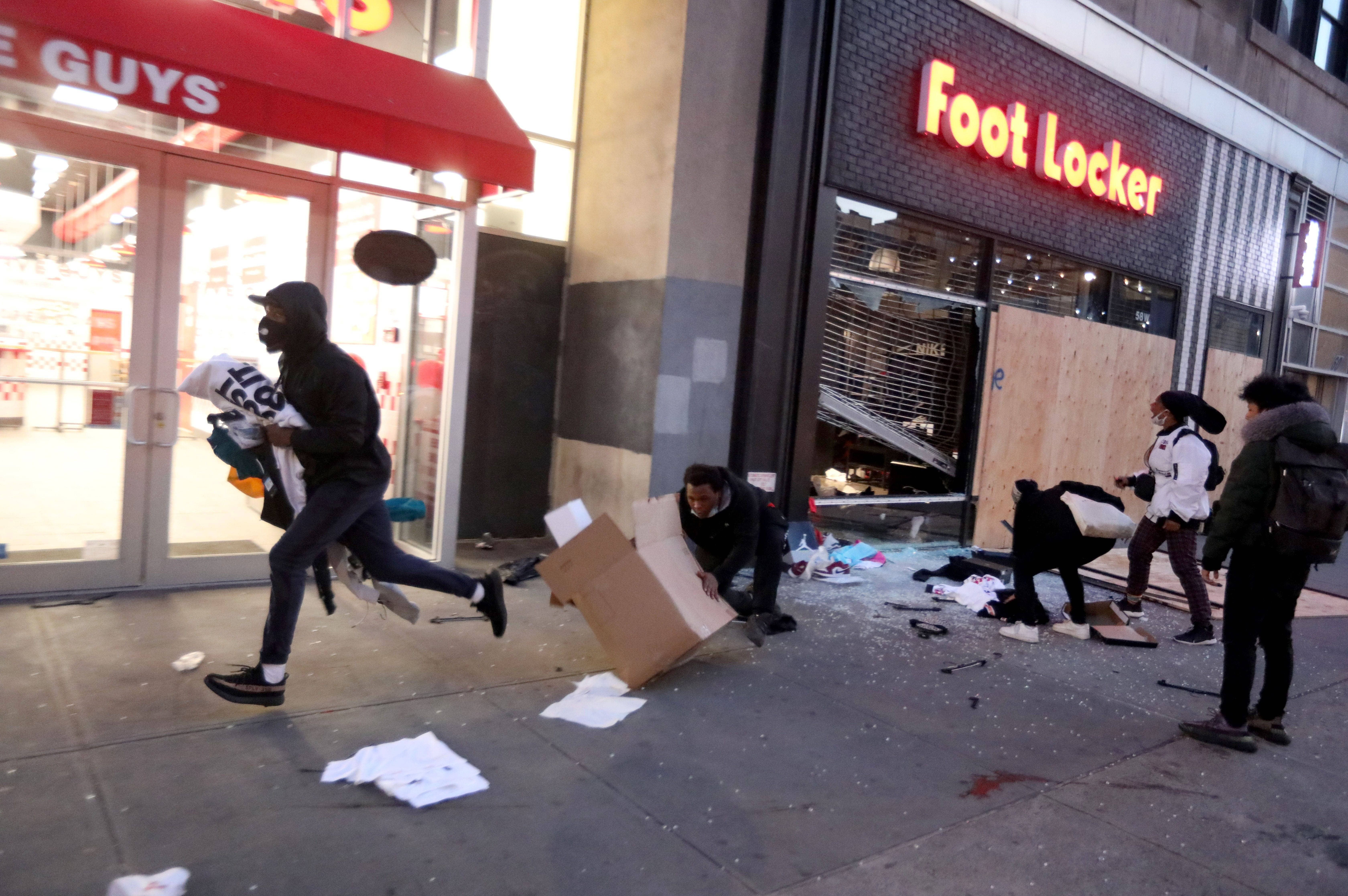 How annoying!
How annoying!
After asking Shel-Bot (our Bing-based AI) to forecast hit’s and misses in the next day’s earnings reports, he’s been getting better and better – even going the past two days without a single wrong call so, yesterday, we asked him what would happen today and he said:
-
- 🤓 Catalent (CTLT): I expect this stock to miss expectations because it is a provider of drug delivery technologies and development solutions for the pharmaceutical and biotechnology industries, which has been facing challenges such as lower revenue from its biologics segment, higher operating costs, and currency fluctuations . The company has also reported negative earnings surprises in two of the past four quarters1.
- Deere (DE): I expect this stock to beat expectations because it is a manufacturer and distributor of agricultural and construction equipment, which has been benefiting from the strong demand and pricing for its products amid the recovery of the global economy and the agricultural sector . The company has also delivered positive earnings surprises in four of the past four quarters2.
- Foot Locker (FL): I expect this stock to beat expectations because it is a retailer of athletic footwear and apparel, which has been recovering from the pandemic-induced store closures and inventory issues . The company has been accelerating its digital transformation, optimizing its store fleet, and enhancing its product assortment and customer loyalty program . The company has also delivered positive earnings surprises in four of the past four quarters3.
- RBC Bearings (RBC): I expect this stock to miss expectations because it is a manufacturer and marketer of engineered precision bearings and components, which has been negatively impacted by the slowdown in industrial activity and capital spending due to the pandemic . The company has also reported negative earnings surprises in two of the past four quarters.
Earnings were actually a 10% miss with a drastic cut in their forecast range to $2-$2.25 vs $3.35-$3.65 before this report. The stock is down 20% pre-market. Shel-Bot gives this summary of earnings:
🤓 Foot Locker Inc. (FL) is a retailer of athletic footwear and apparel. It operates more than 3,000 stores in 27 countries under various banners, such as Foot Locker, Lady Foot Locker, Kids Foot Locker, Champs Sports, Eastbay and Footaction. The company reported its earnings for the first quarter of 2023 on May 19, 2023. Here is a summary and analysis of the earnings report:
-
- The company posted quarterly earnings of $0.70 per share, missing the Zacks Consensus Estimate of $0.78 per share. This compares to earnings of $1.60 per share a year ago. These figures are adjusted for non-recurring items. This quarterly report represents an earnings surprise of -10.26%1.
- The company reported revenues of $1.93 billion for the quarter ended April 2023, missing the Zacks Consensus Estimate by 3.23%. This compares to year-ago revenues of $2.18 billion. The company has topped consensus revenue estimates three times over the last four quarters1.
- The company attributed the lower-than-expected results to the ongoing impact of the COVID-19 pandemic, which disrupted its store operations and supply chain. The company also faced increased freight and occupancy costs, as well as unfavorable currency exchange rates1.
- The company’s comparable-store sales decreased by 5.1% year over year, reflecting a decline of 6.7% in North America and an increase of 0.9% in the international segment1.
- The company’s gross margin contracted by 330 basis points to 31% of sales, mainly due to higher markdowns and occupancy costs1.
- The company’s operating margin declined by 570 basis points to 4.8% of sales, reflecting lower gross margin and higher selling, general and administrative expenses1.
- The company’s net income decreased by 76% to $34 million, or $0.20 per share on a GAAP basis, compared to $141 million, or $1.34 per share, in the prior-year quarter1.
- The company ended the quarter with cash and cash equivalents of $1.38 billion, long-term debt of $122 million and shareholders’ equity of $2.51 billion1.
- The company did not provide any guidance for the second quarter or the full year of 2023, citing the uncertainty and volatility caused by the pandemic1.
The earnings report shows that Foot Locker faced significant challenges in the first quarter of 2023 due to the pandemic and its long-term effects on consumer demand, store operations and supply chain. The company missed both earnings and revenue estimates by a wide margin and saw its profitability decline sharply. The company also did not offer any outlook for the future, indicating a lack of visibility and confidence in its recovery prospects.
However, the earnings report also reveals some positive aspects that could support the company’s long-term growth potential. The company continued to invest in its digital capabilities and omnichannel initiatives, which helped it drive online sales growth of 43% in the quarter1. The company also maintained a strong balance sheet with ample liquidity and low leverage, which could enable it to weather the crisis and pursue strategic opportunities1. The company also resumed its dividend payments and share repurchases in the quarter, signaling its commitment to returning value to shareholders1.
Overall, the earnings report suggests that Foot Locker is facing a tough environment due to the pandemic and its aftermath, but it is also taking steps to adapt and innovate in order to emerge stronger when conditions improve.
 Shrinkage (as we discussed yesterday) is also a problem at Foot Locker and for a retailer who only makes $342M (3.9%) in $8.75Bn in sales, even a 1% theft rate can destroy the profitability. That plus the very discretionary nature of footwear with a challenged customer base were the two major factors that were missed in the analysis.
Shrinkage (as we discussed yesterday) is also a problem at Foot Locker and for a retailer who only makes $342M (3.9%) in $8.75Bn in sales, even a 1% theft rate can destroy the profitability. That plus the very discretionary nature of footwear with a challenged customer base were the two major factors that were missed in the analysis.
FL is also behind the inflation curve, with the prices they are paying having risen before they’ve been able to pass them along to consumers who, for the most part, have shoes and simply wear them for another 6 months when times are tight before spending money on new shoes. Eventually, they will get back to their normal 5% margins and $3Bn (at $30) for the company will be a bargain.
We sold 10 of the FL 2025 $35 puts for $5.75 ($5,750) in the Short-Term Portfolio but, since we missed, the trade moves to our Long-Term Portfolio where we will add a bullish position of 15 (to start) 2025 $30 calls at $7 ($10,500) and we’ll wait a bit and see if there’s a bounce before selling any short calls. That will put us in the 15 longs at net $4,750 so our break-even will be $33.16. If we are able to sell 10 of the 2025 $45 calls for $4.75 on a bounce, then we will enjoy a free spread (with the obligation to buy 1,000 shares of FL for $35 down the road).
That was our backup plan in the first place and the net of the sale of the $35 puts was $29.25 (actually $5.40 as $5.60 was the final price for the puts) – which is where we felt safe as an initial entry should they miss – and here we are already so why would we not follow through with our plan?
I like Foot Locker because shoes are not something that’s very successful on-line as you really have to try them on to be sure. While they may be in a down cycle, old shoes do eventually wear out and people have to get new pairs at some point. CROX is another one of our favorites but holding up much better than FL.
As we restart our Short-Term and Long-Term Portfolios, we do have a free window to play these short-puts in the STP because, if it goes against us, we can just flip them to the much larger LTP, which will then start with a highly discounted position (assuming we still have overall faith).
As to Shel-Bots other picks for the morning: CTLT announced it’s report would be delayed and they lowered guidance – that’s a win for our bot. DE had a considerable beat and raised guidance – winner for Shel-Bot and we’re still waiting on RBC to report.
Using what we’ve learned from this week’s predictions, I’ve tweaked Shel-Bot’s analysis for future predictions so let’s see what he thinks Monday’s Earnings Reports will look like:
🤓 Here are my predictions for the companies that will report earnings on Monday, May 22, 2023 and the reasons behind them:
- Global-E Online (GLBE): I expect this stock to miss expectations because it is a provider of cross-border e-commerce solutions, which has been facing challenges due to the COVID-19 pandemic, such as lower international travel and demand, higher shipping costs and delays, and currency fluctuations. The company reported a net loss of $0.18 per share on revenues of $139.9 million in the fourth quarter of 2022, missing the Zacks Consensus Estimate of $0.30 per share on revenues of $138.7 million1. The company also provided a weak guidance for the first quarter of 2023, expecting revenues of $111 million to $113 million and adjusted EBITDA of -$4 million to -$2 million1. The Zacks Consensus Estimate for the first quarter of 2023 is a loss of $0.05 per share on revenues of $111.6 million2, which I think is too optimistic given the company’s recent performance and outlook.
- Capital Southwest Corp. (CSWC): I expect this stock to beat expectations because it is a business development company that invests in lower middle market companies, which has been benefiting from the economic recovery and the favorable credit market conditions. The company reported net investment income of $0.62 per share on total investment income of $19.8 million in the third quarter of 2023, beating the Zacks Consensus Estimate of $0.61 per share on total investment income of $19.5 million1. The company also increased its quarterly dividend by 4% to $0.54 per share and announced a supplemental dividend of $0.10 per share for the fourth quarter of 20231. The Zacks Consensus Estimate for the fourth quarter of 2023 is $0.62 per share on total investment income of $20 million2, which I think is too conservative given the company’s strong portfolio performance and dividend policy.
- HEICO (HEI): I expect this stock to miss expectations because it is a manufacturer of aerospace and defense products, which has been suffering from the prolonged impact of the COVID-19 pandemic on the aviation industry. The company reported net income of $0.73 per share on net sales of $525.6 million in the first quarter of 2023, missing the Zacks Consensus Estimate of $0.75 per share on net sales of $534.9 million1. The company also lowered its guidance for the full year of 2023, expecting net income to decrease by 5% to 7% and net sales to decrease by 8% to 10% from the prior year levels1. The Zacks Consensus Estimate for the second quarter of 2023 is $0.73 per share on net sales of $675.9 million2, which I think is too high given the company’s weak results and outlook.
- Nordson (NDSN): I expect this stock to beat expectations because it is a producer of precision dispensing equipment and systems, which has been enjoying robust demand from various end markets, such as electronics, medical, industrial and consumer products. The company reported adjusted earnings of $2.11 per share on sales of $589 million in the first quarter of 2023, beating the Zacks Consensus Estimate of $1.97 per share on sales of $573.4 million1. The company also raised its guidance for the full year of 2023, expecting adjusted earnings to grow by 14% to 18% and sales to grow by 9% to 11% from the prior year levels1. The Zacks Consensus Estimate for the second quarter of 2023 is $2.11 per share on sales of $638.4 million2, which I think is too low given the company’s strong results and outlook.
- Zoom Video (ZM): I expect this stock to beat expectations because it is a provider of video conferencing and collaboration solutions, which has been witnessing sustained growth in its user base and revenues amid the COVID-19 pandemic and the shift to remote work and learning. The company reported adjusted earnings of $0.99 per share on revenues of $882.5 million in the fourth quarter of 2022, beating the Zacks Consensus Estimate of $0.79 per share on revenues of $811.8 million1. The company also provided a strong guidance for the first quarter and the full year of 2023, expecting adjusted earnings of $0.95 to $0.97 per share on revenues of $900 million to $905 million for the first quarter and adjusted earnings of $3.59 to $3.65 per share on revenues of $3.76 billion to $3.78 billion for the full year1. The Zacks Consensus Estimate for the first quarter of 2023 is $0.99 per share on revenues of $1.08 billion2, which I think is too high given the company’s results and outlook.

By the way, I said to Shel-Bot: “You mention Covid a lot but it’s May 19, 2023 and the US has declared the emergency over. Why do you still consider it to be such a factor in your earnings forecasts?” and his response was:
🤓 I mention COVID-19 a lot because it is still a factor in the earnings forecasts of many companies, especially those that operate in or depend on international markets. Even though the US has declared the emergency over, the COVID-19 situation is not the same in other parts of the world.
According to the WHO1, as of May 10, 2023, there have been over 765 million confirmed cases and over 6.9 million deaths globally. Some regions and countries are still experiencing high levels of transmission, hospitalizations and deaths due to COVID-19 variants, low vaccination rates, limited health system capacity and public health measures2.
For example, Puerto Rico reported a COVID-19 positivity rate of 17% as of May 17, 20233, while Metro Manila’s COVID-19 positivity rate was 26% as of May 17, 20234. Sabah, Malaysia also reported a surge in COVID-19 cases in May 20235. These are some of the markets where the companies that I mentioned operate or sell their products or services. Therefore, COVID-19 is still a relevant and important factor to consider in the earnings forecasts of these companies.
The COVID-19 positivity rate is defined as the percentage of people who test positive for COVID-19 out of all the people who are tested. It is an indicator of how widespread the infection is in a population and how adequate the testing is. A high positivity rate means that there are more undetected cases and that the testing is not sufficient to capture the true extent of the outbreak. A low positivity rate means that there are fewer undetected cases and that the testing is more comprehensive and reliable.
According to Worldometer1, as of May 18, 2023, some of the countries with the highest positivity rates in the world are:
| Country | Positivity Rate (%) |
|---|---|
| Seychelles | 57.7 |
| Mongolia | 43.8 |
| Maldives | 40.9 |
| Botswana | 38.9 |
| India | 36.5 |
| Nepal | 35.8 |
| Suriname | 34.6 |
| Trinidad and Tobago | 33.2 |
| Bahrain | 32.4 |
| Argentina | 31.9 |
These are some of the parts of the world where COVID-19 is still a serious public health threat and where more testing and preventive measures are needed to contain the spread of the virus.
So actually, it’s more like:

Have a great weekend,
-
- Phil
“Don’t mis-serve your own needs
Speed it up a notch, speed, grunt, no, strength
The ladder starts to clatter
With a fear of height, down, height
Wire in a fire, represent the seven games
And a government for hire and a combat site
“It’s the end of the world as we know it
It’s the end of the world as we know it
It’s the end of the world as we know it and I feel fine” – REM







